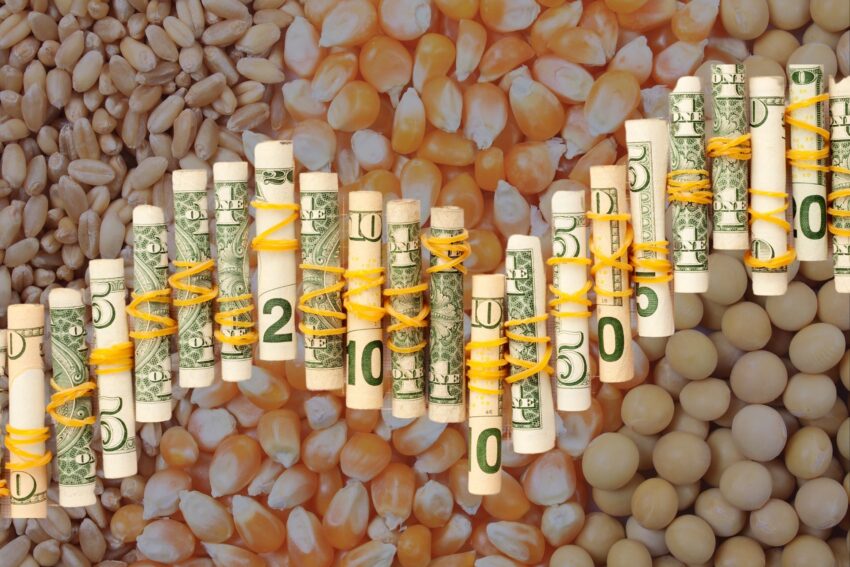Today, March 11, 2025, the USDA released its latest World Agricultural Supply and Demand Estimates (WASDE) report, and for farmers across the heartland, it’s a mixed bag of challenges and opportunities. From a farmer’s perspective, this report isn’t just a set of numbers—it’s a roadmap for navigating the volatile terrain of global markets, trade policies, and weather uncertainties. With tariffs now officially factored into the forecasts, the stakes are higher, but so is the potential for savvy producers to come out ahead. Let’s break it down and figure out how farmers can plan smartly based on what’s in front of us.
The corn outlook paints a picture of cautious optimism. The WASDE report likely trimmed U.S. ending stocks slightly, reflecting steady export demand despite tariff pressures from the Trump administration’s trade policies. Global corn production estimates might have taken a hit, especially with Argentina’s crop facing scrutiny after uneven weather. For farmers, this suggests a market where prices could firm up if South American yields disappoint further. Now’s the time to lock in some forward contracts—say, 20-30% of your expected 2025 harvest—if you haven’t already. With the U.S. dollar flexing its muscle and trade talks looming, holding too much grain unsold could leave you exposed to a sudden dip if tariffs escalate or demand softens. Keep an eye on Brazil’s safrinha crop progress too; any hiccups there could be your ticket to a late-season price bump.
Soybeans, on the other hand, are a tighter game. The report probably held U.S. ending stocks steady or nudged them down a hair, thanks to a robust crush pace and exports hanging tough despite China’s retaliatory tariffs. World stocks might have shrunk again, with Argentina’s recovery still lagging and Brazil’s harvest delays from wet weather stirring the pot. This is a green light for soybean growers: prices are flirting with levels that could justify selling another chunk of your 2024 crop—maybe 15-20%—to capitalize on the current strength. For 2025 planning, consider boosting soybean acres over corn if your ground allows it. The carryover is thin, and with trade uncertainty in the air, soybeans could be your hedge against a corn market that’s more vulnerable to tariff fallout.
Wheat farmers, you’re not out of the woods, but there’s daylight. The WASDE likely shaved a few million bushels off U.S. ending stocks, with exports ticking along and global supplies tightening thanks to smaller crops in Russia and Europe. Prices might not be soaring, but they’re stable enough to warrant action. If you’ve got wheat in the bin, selling 10-15% now could lock in a decent return before the market digests any tariff-driven shifts. Looking ahead, think about locking in input costs for your spring wheat acres—fertilizer and fuel prices are jittery with all this trade noise, and securing them now could save you a headache later.
Corn: Forward sell 20-30% of 2025 production now; watch South American weather closely for a chance to sell more later.
Soybeans: Sell 15-20% of 2024 crop at current prices; lean toward more soybean acres in 2025 if soil and rotation align.
Wheat: Move 10-15% of stored wheat soon; lock in spring input costs to dodge trade-related price spikes.
General: Diversify your marketing—use options or basis contracts to stay flexible in this tariff-charged climate.
The big wildcard in this WASDE is the tariff factor, freshly baked into the numbers. With President Trump’s trade rhetoric heating up—think potential 25% tariffs on Canada and Mexico, paused until April but still looming—it’s a reminder that markets can turn on a dime. Farmers need to stay nimble, not just reactive. That means keeping cash flow liquid, maybe holding off on big equipment buys unless you’ve got sales locked in to cover it. If you’re sitting on a pile of grain, don’t get greedy waiting for the perfect price—steady gains beat a tariff-induced crash any day.
At its core, this report underscores what we’ve always known: farmers are the backbone of this system, and no amount of trade posturing or global forecasts changes that. The WASDE gives us the data, but it’s your grit and know-how that turn it into profit. So, take these numbers, talk to your co-op or advisor, and make a plan that puts you in the driver’s seat. The world’s watching our fields—let’s show them what we’re made of.


